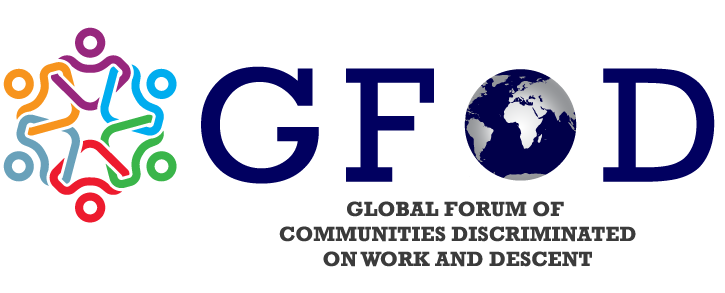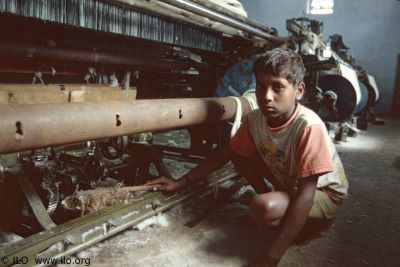India: Dalit Children go Missing, Get Trafficked or Work for a Living
About 10.1 million children aged between 5 to 14 work in India. Recent deaths in factories in Delhi, home to the country's capital city points to the enslavement of children in risky factories.
A total of 59,262 children were reported to go missing in India in 2020, according to the National Crime Records Bureau's ‘Crime in India – 2021' report. The country's crime records office that says that with 48,972 children remaining untraced from the previous years, the total number of missing children has gone up to 1,08,234.
Even the four-month long lockdown imposed throughout the country in 2020 to combat COVID-19 was no deterrence. Worse, the share of missing girls was 77 per cent.
The bureau has previously said that “hundreds of children go missing every day in the country.” And “a percentage of the total number of people who go missing will have been the victims of serious crime.”
NCRB acknowledges that the missing people become vulnerable to trafficking, violence, drug addiction, prostitution and other risks of exploitation and involvement in crime. “Many of missing persons end up getting trafficked,” it says, adding that “labour and sexual exploitation are two prominent reasons of trafficking.”
The link between the missing and those trafficked on the one hand, and caste on the other hand is obvious, though nuanced.
According to the UN's Special Rapporteur Tomoya Obokata, child labour, caste and poverty are closely linked in India. “In India, child labour, caste-based discrimination and poverty are closely interlinked,” the Special Rapporteur says in his report on ‘Contemporary forms of slavery affecting persons belonging to ethnic, religious and linguistic minority communities'.
The report also notes that systematic discrimination has profound implications for the ability of affected individuals and communities to live a life of dignity and enjoy human rights on equal footing with others.
It said that the stigmatisation of some communities is perpetuated by negative stereotypes in the media, textbooks, or on the Internet, which contributes to their disempowerment.
People discriminated against on the basis of work and descent represent one example. They are bound by their inherited status and subjected to dehumanising discourses that refer to “pollution” or “untouchability”, with no respect for human dignity and equality.
“Consequently, such people have limited freedom to renounce inherited occupations or degrading or hazardous work and are often subjected to debt bondage without sufficient access to justice,” the report said.
Rights activists say that the NCRB's report in recent years is a pale shadow of the scholarly work it showcased earlier. It now brings out a consolidated Crime in India report, abandoning its earlier ‘Report on Missing Women and Children in India'.
For instance, the last report on missing women and children quoted earlier does not ascribe any specific reason for the children going missing and instead, makes a generalised statement: “They become vulnerable to trafficking, violence, drug addiction, prostitution and other risks of exploitation and involvement in crime.”
In contrast, the 2014 edition of the same report said, “a girl is abducted every eight minutes in India. The primary cause of human trafficking in the country is represented by forced labour as children in debt bondage are forced to work in brick kilns, rice mills, agriculture and embroidery factories.”
In his report on contemporary forms of slavery, including its causes and consequences, the UN's Special Rapporteur says that deep-rooted intersecting forms of discrimination, in combination with multiple other factors, are the main causes of contemporary forms of slavery affecting minorities.
They are often the result of historical legacies, such as slavery and colonisation, systems of inherited status, and formalised and State-sponsored discrimination, he said.
Obokata said in the report to the UN General Assembly in August 2022 that child labour (among children 5 to 17 years of age), including its worst forms, exists in all regions of the world.
India's economic development over the past couple of decades has masked the degree of poverty and inequality – the basic reasons behind trafficking and working children. Many poor families in India struggling to meet their basic needs, seek employment for their children as a means to more income. A vast majority of India's poor and unequal citizens are Dalits and tribal people for whom poverty is a vicious cycle and survival a basic priority.
According to the child rights group, Child Rights and You (CRY), children from underserved families are subjected to trafficking in the form of forced child labour and/or sex trafficking. “Disadvantaged communities – Dalits, tribals, and religious minorities – are most vulnerable to trafficking,” the group says, adding that several children are illegally employed in brick kilns, construction sites and agricultural fields.
Recent deaths of children in factories in Delhi, home to the country's capital city, points to a large number of children still working in risky factories.
India has addressed the phenomenon of working children through the enactment of the Child Labour (Prohibition and Regulation) Amendment Act, 2016, prohibiting the employment of children below 14 years of age in any occupation, except after school work and when assisting in family enterprises.
There are about 10.1 million working children between the age of 5 to 14 in India according to the International Labour Organisation (ILO). These estimates are based on the last census of 2011 and suggest a steep decline of some 2.6 million in 2001, but, as ILO says, the decline of child labour in India was more visible in rural areas “while the number of child workers has increased in urban areas, indicating the growing demand for child workers in menial jobs.”
About 50 percent of the world's trafficked people are in India, and the majority of them are Dalits. These numbers are indicative. There is no way to know what true numbers are due to the underground nature of the industry that hides the slave-like conditions of work.
Marginalised communities often remain overlooked in public policies and national budgetary allocations, and their access to justice and remedies in cases of human rights violations, including contemporary forms of slavery, is generally limited.


